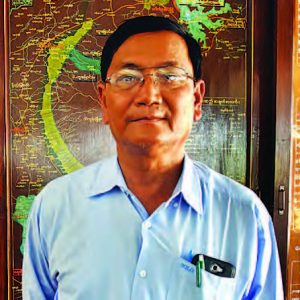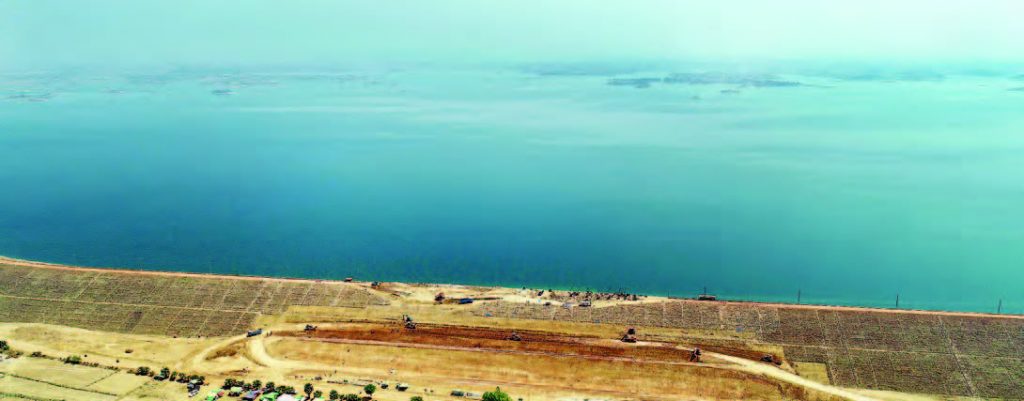Rumours spread last January that Taung Nawin Dam was collapsed in Paukkaung, Pyay District. All the people residing near the dam were alarmed and they had to live in doubt and anxiety.
To relieve these anxieties, responsible persons from Water Resource Utilization Department and a Japanese expert were interviewed on the condition of the dam and measures taken for its maintenance.

U Aung Bo (Director, Taung Nawin Dam)
Q: Please explain how the dam project was started.
A: Taung Nawin Dam project was the fruit of a master plan designed to develop the upper part of Ayeyawady delta region. This master plan was made in three phases. Feasibility study was conducted as the first phase in 1978 followed by the second and third phases in 1979. In 1980, Japan International Cooperation Agency (JICA) hired Sanyu Consultant Inc to conduct the feasibility study in 1984 and to finalize the design of the dam. The construction works started during 1985 and 1986 and completed during 1994 and 1995.
Q: What is the purpose of the dam?
A: The dam is spanning Taung Nawin creek near Yatthit village, two miles east of Paukkaung, Pyay District in Bago Region. It is to irrigate 57258 acres of agricultural land in Paukkaung, Pyay and Thegon townships. At present, the dam supplies water to 7000 acres of summer paddy and 12000 acres of monsoon paddy.
Q: Let us know about the crack on the surface of the dam and measures being taken.
A: In October 2018, three moderate earthquakes jolted near the dam and also in January 2019, another quake jolted again. The cracks were found on January 8. According to the study made by Myanmar and Japanese experts, the cracks were the consequence of the earthquake. After the incidents, the dam is under watchful eye of the department. Geological testing has been made together with Japanese experts. Based on the outcomes repair and maintenance measures are being taken in a timely manner before the monsoon season.
Q: What is the plan for the monsoon season?
A: Water flow into the dam has been recorded monthly since 1996. Maximum water flow was in 2011. To relieve the anxiety of local people, only half of the storage capacity of the dam will be stored to supply water for monsoon and summer paddy. Geological study will also be made to know the condition of the dam.
Q: What is the opinion of the department on feedback given by locals on building sluice gate?
A: Suggestions are welcome, but building a sluice gate should be conducted only after making a thorough study. Experts suggest that it is better to build sluice gate in the dams in the delta region. It is because in case there occurs floods and water is released from the dam, there may be inundation in downstream of the dam. We have witnessed such situation in our neighbouring countries. Therefore, we should take time to make a thorough study.

Dr Moto Yashika (Japanese Dam Expert)
A: Please give your opinion on building sluice gate at Taung Nawin Dam.
Q: In Japan, it takes at least ten years to make a study for building sluice gate or spill way at a dam. The study is made to know whether there is necessary or not to install such facilities and the consequences of it. If water is released from just one sluice gate while flood occurs, the downstream areas will be surely inundated. We have experienced such situation in Thailand. So, in my opinion, building of a sluice gate should not be rushed. My opinion is that taking a time, systematic study should be made phase-by-phase.
(Translated by Wallace)



